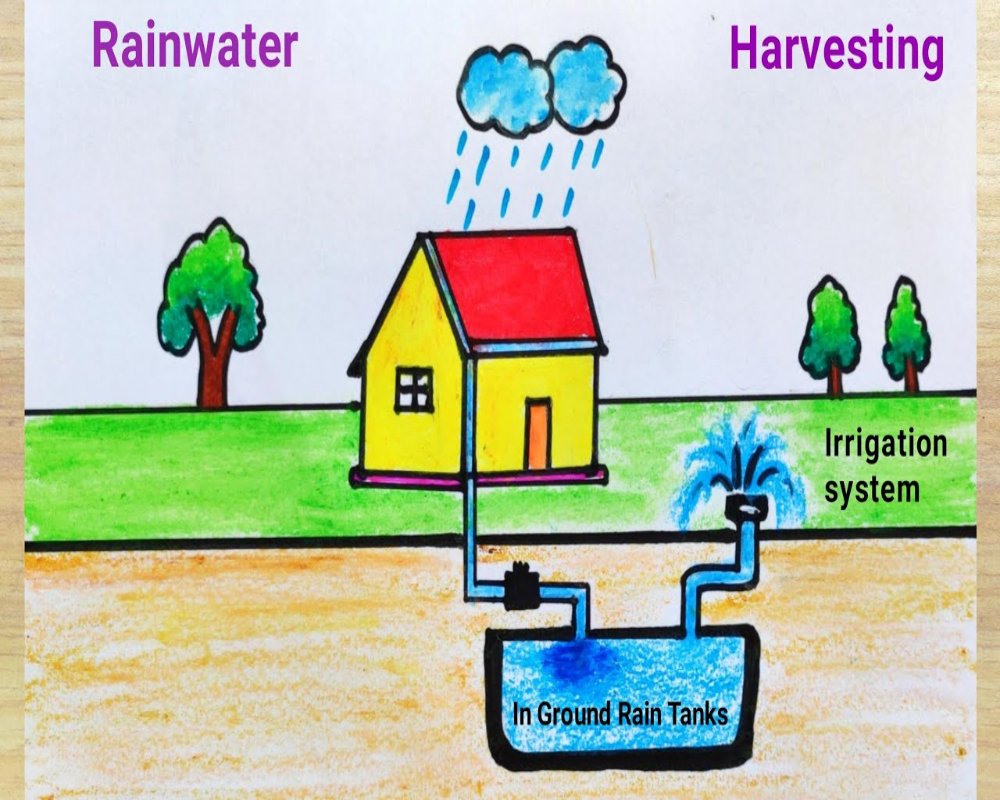Introduction
Rainwater harvesting in industries is the practice of collecting, storing, and utilizing rainwater that falls on rooftops, paved areas, and open spaces within industrial premises. This technique is gaining momentum as an effective solution for addressing water scarcity, reducing dependency on groundwater, and contributing to sustainable water management. In industrial settings where large-scale operations often require significant water consumption for processes such as cooling, cleaning, or manufacturing, rainwater harvesting offers a practical and eco-friendly alternative that supports environmental compliance and operational efficiency.
Given the growing strain on natural water resources and the rising cost of water procurement, many industries are now mandated by environmental authorities or encouraged through policy incentives to implement rainwater harvesting systems. These systems are not only beneficial for industries located in water-stressed regions but also form an essential component of green industrial infrastructure.
Components and Working Mechanism
A typical rainwater harvesting system in an industrial facility includes components such as catchment areas (usually rooftops or large paved surfaces), gutters and downpipes, filters to remove debris, storage tanks, and recharge pits or borewell injection systems. The collected rainwater can either be stored for direct use or allowed to percolate into the ground to recharge aquifers.
In direct use systems, the harvested water may be used for non-potable purposes such as gardening, floor washing, machine cooling, or flushing systems. For indirect use, industries develop groundwater recharge structures like percolation pits, trench drains, or recharge wells, which help replenish the underground water table and support long-term water availability.
Benefits and Industrial Applications
Rainwater harvesting brings several tangible and intangible benefits to industrial units. It reduces the dependency on municipal water supplies or borewell extraction, helping industries manage their water budget more effectively. It also minimizes stormwater runoff, thereby reducing the risk of local flooding and erosion around the facility.
Environmentally, it contributes to water conservation, lowers the carbon footprint associated with water transportation, and enhances the sustainability credentials of the enterprise. In certain green building and environmental certification systems, rainwater harvesting is also a scoring parameter, which can support compliance and brand value.
Industries such as textiles, food processing, pharmaceuticals, automotive manufacturing, and heavy engineering have successfully implemented rainwater harvesting systems to support their non-potable water needs and improve their water management strategies.
Regulatory and Compliance Context
In several countries, rainwater harvesting is a mandatory requirement for industries operating in designated water-scarce zones or as part of obtaining environmental clearances. State Pollution Control Boards and Urban Development Authorities often include rainwater harvesting as a condition in the environmental management plans for new industrial projects.
Failure to implement such systems may lead to delays in project approvals or non-compliance penalties. On the other hand, industries that actively adopt rainwater harvesting often qualify for incentives, tax rebates, or subsidies on installation costs. These regulations are designed to encourage industries to take responsibility for managing their water consumption more sustainably.
Design Considerations and Maintenance
Designing an efficient rainwater harvesting system requires a detailed understanding of rainfall patterns, catchment size, surface runoff coefficients, and intended water use. The storage capacity must be optimized to meet seasonal demands while avoiding overflow and contamination risks.
Filtration units are critical to ensure that the collected rainwater is free from leaves, sediments, and pollutants. Regular cleaning of catchment areas, desilting of recharge pits, inspection of storage tanks, and maintenance of pipelines are essential to keep the system effective and hygienic.
Automation and monitoring technologies are increasingly being integrated into industrial rainwater harvesting systems to track water levels, monitor quality, and optimize usage patterns.
Conclusion
Rainwater harvesting in industries is a practical, cost-effective, and environmentally sustainable approach to water resource management. It enhances water security, reduces operational costs, and supports compliance with environmental norms. With increasing pressure on freshwater sources and growing regulatory mandates, integrating rainwater harvesting into industrial infrastructure is no longer an optional green initiative—it is an operational necessity and a strategic commitment to sustainable development. As industries look to future-proof their operations, adopting comprehensive water management solutions like rainwater harvesting will be a key component of resilient and responsible industrial growth.
Hashtags
#RainwaterHarvesting #SustainableIndustry #WaterConservation #EcoFriendly #GreenTechnology #IndustrialWaterManagement #RainwaterReuse #ResourceEfficiency #SustainablePractices #WaterSustainability #RainwaterCollection #EnvironmentalImpact #IndustryInnovation #WaterScarcity #CleanWaterInitiatives #RainwaterSystems #ClimateAction #WaterSmart #IndustrialSustainability #HarvestingRainwater


